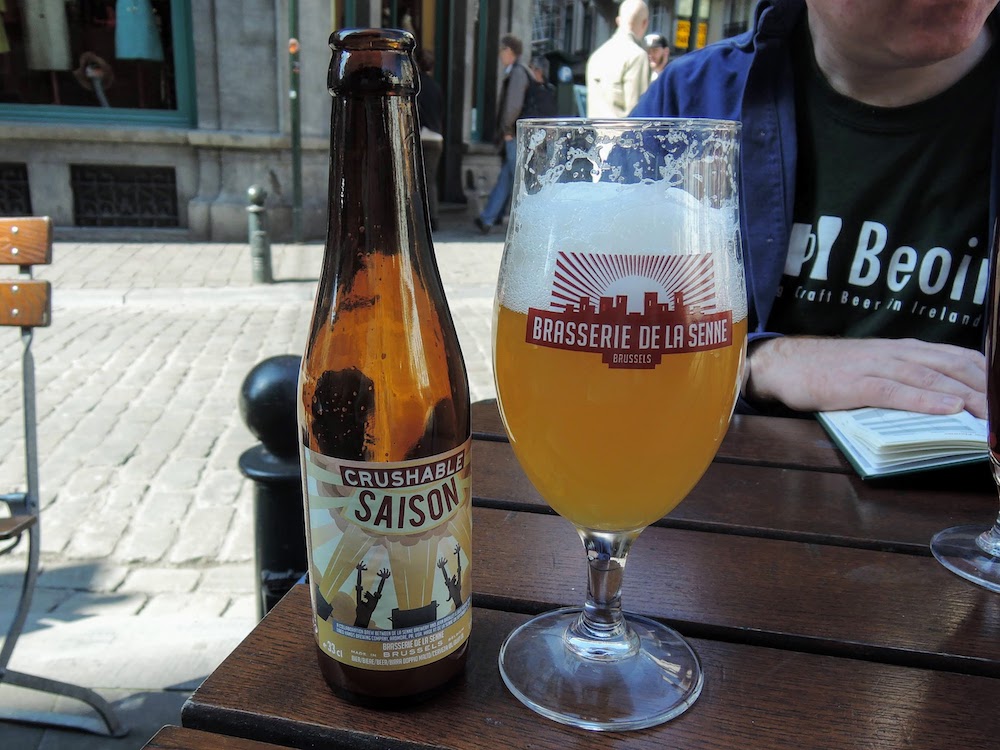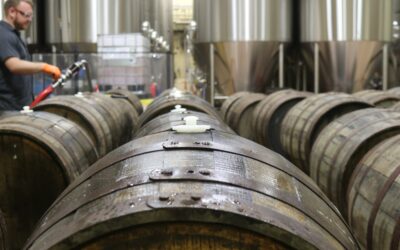Some of the earliest commercial breweries operated at farms on or near which barley was grown. Adding a maltings and a brewery to a farm made sound sense economically, not just for adding value to the crop but also for providing winter employment agricultural labourers.
Come late Spring, the brewery would close, as open fermenting vessels began to become prey to insect life. Thus, brewery workers became farm hands once more, until brewing recommenced shortly before harvest.
As a nod to its history, Saison is sometimes referred to as a ‘farmhouse’ style of beer. It survived the 20th century in various forms, in southern Belgium and parts of Eastern France. It would be brewed in the Spring for consumption by the workers toiling in the fields in summer. As this was primarily for hydration, it will have been mostly a light styler, though some regular strength beer was held back for consumption after Harvest, until beers brewed from the new season’s malt became available.
Being stored in sealed oak tuns for up to six months was not enough time for slower acting Brettanomyces yeast to bring proper ageing, but other microorganisms will have had time to bring enough rustic edges for these to be noticeable.

Brasserie de la Senne in Brussels brews several traditional saisons with a post-modern twist (photo: André Brunnsberg)
Saison légère (Light saison)
The beer made as the daily drink of agricultural workers was likely so light (2.5-3.5% ABV) that it may well have been made from second runnings, the wort produced when boiling water is sparged through spent grain. The dry version from rural Hainaut has a prominent hop character, and likely a different history from one with a sweet base of unfermented sugar, found in Liège and other parts of 19th century Belgium’s industrial belt.
Belgian saison
This copper-blond ale style (5.5-6.5% ABV) is dominated by a hop-yeast combo that fuels grass and hay aromas, and encourages flavours that capture rurality in a bottle. Its fortunes changed in 1975 when the most appealing of the heritage brands, the then recently reformulated Saison Dupont, made with five types of yeast at a brewery based within a cute-looking farm in rural Hainaut, caught the attention of early beer writers and US importers. This spawned a new generation of Saison beers, held by some to have influenced the whole American beer revival.
Craft saison
Recent years have seen the emergence of a swathe of beers (4.0-6.5% ABV), described as Saison, but employing a narrow range of specially cultured yeast, plus intricate production rules that lead to the creation of a slightly musty beers, some of which can be frankly acidic. This style had taken on a life of its own, such that many had little in common with the 21st century Belgian classics. However, the last five years have seen an interesting sort of cultural exchange between Belgian and other brewers, such that the two styles may yet coalesce.
A fad for adding fruit extracts to craft saisons is fading (thankfully!), having distracted from, rather than added to understanding the greatness of this style.



